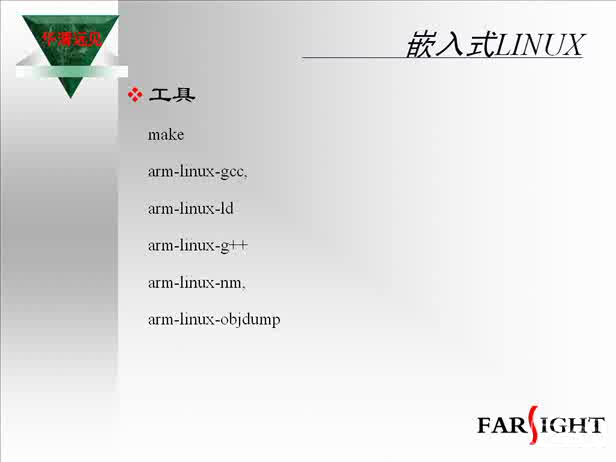多線程編程之:Linux線程編程
9.2.2 線程之間的同步與互斥
本文引用地址:http://www.104case.com/article/264053.htm由于線程共享進程的資源和地址空間,因此在對這些資源進行操作時,必須考慮到線程間資源訪問的同步與互斥問題。這里主要介紹POSIX中兩種線程同步機制,分別為互斥鎖和信號量。這兩個同步機制可以互相通過調(diào)用對方來實現(xiàn),但互斥鎖更適合用于同時可用的資源是惟一的情況;信號量更適合用于同時可用的資源為多個的情況。
1.互斥鎖線程控制
(1)函數(shù)說明。
互斥鎖是用一種簡單的加鎖方法來控制對共享資源的原子操作。這個互斥鎖只有兩種狀態(tài),也就是上鎖和解鎖,可以把互斥鎖看作某種意義上的全局變量。在同一時刻只能有一個線程掌握某個互斥鎖,擁有上鎖狀態(tài)的線程能夠?qū)蚕碣Y源進行操作。若其他線程希望上鎖一個已經(jīng)被上鎖的互斥鎖,則該線程就會掛起,直到上鎖的線程釋放掉互斥鎖為止。可以說,這把互斥鎖保證讓每個線程對共享資源按順序進行原子操作。
互斥鎖機制主要包括下面的基本函數(shù)。
n 互斥鎖初始化:pthread_mutex_init()
n 互斥鎖上鎖:pthread_mutex_lock()
n 互斥鎖判斷上鎖:pthread_mutex_trylock()
n 互斥鎖接鎖:pthread_mutex_unlock()
n 消除互斥鎖:pthread_mutex_destroy()
其中,互斥鎖可以分為快速互斥鎖、遞歸互斥鎖和檢錯互斥鎖。這3種鎖的區(qū)別主要在于其他未占有互斥鎖的線程在希望得到互斥鎖時是否需要阻塞等待。快速鎖是指調(diào)用線程會阻塞直至擁有互斥鎖的線程解鎖為止。遞歸互斥鎖能夠成功地返回,并且增加調(diào)用線程在互斥上加鎖的次數(shù),而檢錯互斥鎖則為快速互斥鎖的非阻塞版本,它會立即返回并返回一個錯誤信息。默認(rèn)屬性為快速互斥鎖。
(2)函數(shù)格式。
表9.5列出了pthread_mutex_init()函數(shù)的語法要點。
表9.6列出了pthread_mutex_lock()等函數(shù)的語法要點。
(3)使用實例。
下面的實例是在9.2.1小節(jié)示例代碼的基礎(chǔ)上增加互斥鎖功能,實現(xiàn)原本獨立與無序的多個線程能夠按順序執(zhí)行。
/*thread_mutex.c*/
#include
#include
#include
#define THREAD_NUMBER 3 /* 線程數(shù) */
#define REPEAT_NUMBER 3 /* 每個線程的小任務(wù)數(shù) */
#define DELAY_TIME_LEVELS 10.0 /*小任務(wù)之間的最大時間間隔*/
pthread_mutex_t mutex;
void *thrd_func(void *arg)
{
int thrd_num = (int)arg;
int delay_time = 0, count = 0;
int res;
/* 互斥鎖上鎖 */
res = pthread_mutex_lock(&mutex);
if (res)
{
printf("Thread %d lock failedn", thrd_num);
pthread_exit(NULL);
}
printf("Thread %d is startingn", thrd_num);
for (count = 0; count < REPEAT_NUMBER; count++)
{
delay_time = (int)(rand() * DELAY_TIME_LEVELS/(RAND_MAX)) + 1;
sleep(delay_time);
printf("tThread %d: job %d delay = %dn",
thrd_num, count, delay_time);
}
printf("Thread %d finishedn", thrd_num);
pthread_exit(NULL);
}
int main(void)
{
pthread_t thread[THREAD_NUMBER];
int no = 0, res;
void * thrd_ret;
srand(time(NULL));
/* 互斥鎖初始化 */
pthread_mutex_init(&mutex, NULL);
for (no = 0; no < THREAD_NUMBER; no++)
{
res = pthread_create(&thread[no], NULL, thrd_func, (void*)no);
if (res != 0)
{
printf("Create thread %d failedn", no);
exit(res);
}
}
printf("Create treads successn Waiting for threads to finish...n");
for (no = 0; no < THREAD_NUMBER; no++)
{
res = pthread_join(thread[no], &thrd_ret);
if (!res)
{
printf("Thread %d joinedn", no);
}
else
{
printf("Thread %d join failedn", no);
}
/* 互斥鎖解鎖 */
pthread_mutex_unlock(&mutex);
}
pthread_mutex_destroy(&mutex);
return 0;
}
該實例的運行結(jié)果如下所示。這里3個線程之間的運行順序跟創(chuàng)建線程的順序相同。
$ ./thread_mutex
Create treads success
Waiting for threads to finish...
Thread 0 is starting
Thread 0: job 0 delay = 7
Thread 0: job 1 delay = 7
Thread 0: job 2 delay = 6
Thread 0 finished
Thread 0 joined
Thread 1 is starting
Thread 1: job 0 delay = 3
Thread 1: job 1 delay = 5
Thread 1: job 2 delay = 10
Thread 1 finished
Thread 1 joined
Thread 2 is starting
Thread 2: job 0 delay = 6
Thread 2: job 1 delay = 10
Thread 2: job 2 delay = 8
Thread 2 finished
Thread 2 joined
linux操作系統(tǒng)文章專題:linux操作系統(tǒng)詳解(linux不再難懂)linux相關(guān)文章:linux教程
塵埃粒子計數(shù)器相關(guān)文章:塵埃粒子計數(shù)器原理












評論